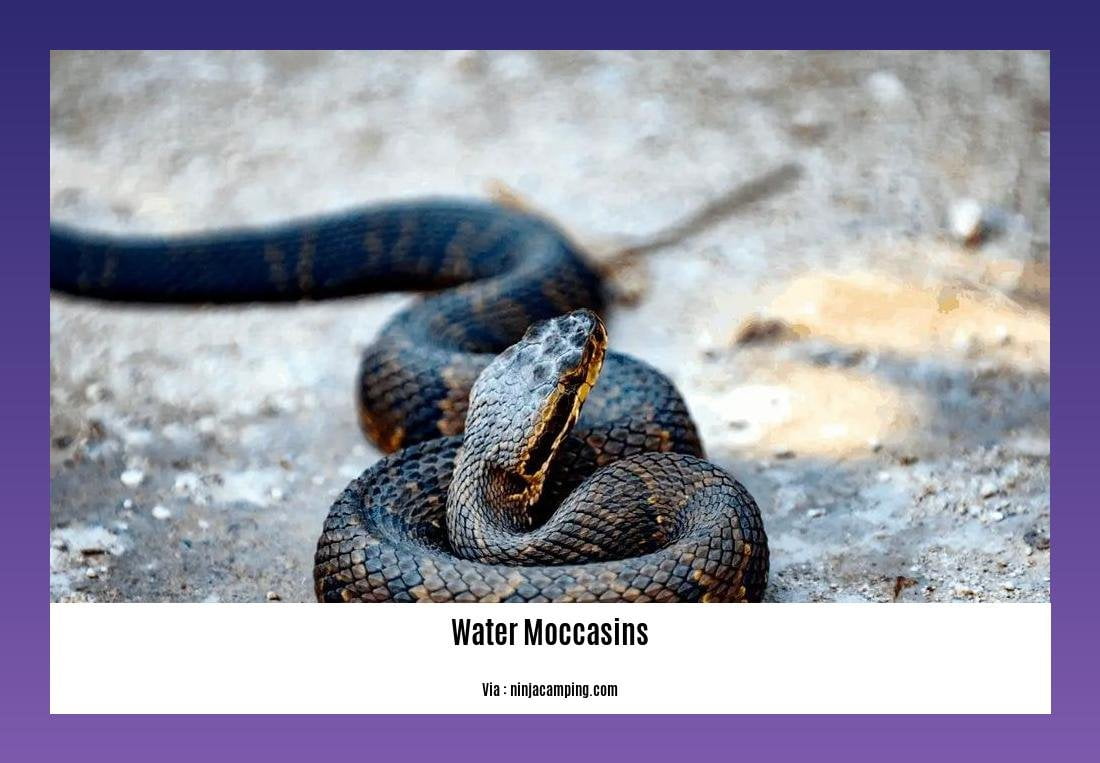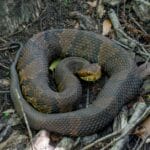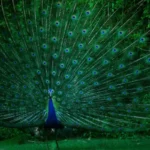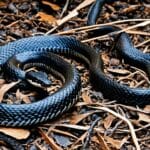Exploring the Dangers of Water Moccasins: Are Water Moccasins Dangerous? Discover the potential hazards of encounters with water moccasins as we delve into their behavior, habitat, and venomous properties. As an experienced wildlife conservationist specializing in herpetology, I bring you an in-depth understanding of these venomous snakes. Through years of fieldwork and research, we will unearth the truth behind the risks associated with water moccasins and equip you with valuable insights to ensure your safety in their presence. Join us on this captivating journey into the world of water moccasins.
Key Takeaways:
- Water moccasins, also known as cottonmouths, are venomous snakes that pose potential dangers to humans.
- As an experienced wildlife conservationist with expertise in herpetology, I have studied water moccasins and their behavior extensively.
- Water moccasins can be found in various habitats, including swamps, marshes, and other bodies of water.
- They are known for their aggressive nature and will defend themselves if they feel threatened.
- Water moccasins have potent venom that can cause serious harm or even death if not treated properly.
- It is important to understand and respect the habitats of water moccasins to minimize the chances of encountering them.
- If you come across a water moccasin, it is best to keep a safe distance and avoid any unnecessary interactions.
- Seeking medical attention immediately after a snakebite from a water moccasin is crucial to receive proper treatment.
- Educating the public on the dangers of water moccasins and promoting conservation efforts can help mitigate potential risks.
Are Water Moccasins Dangerous?
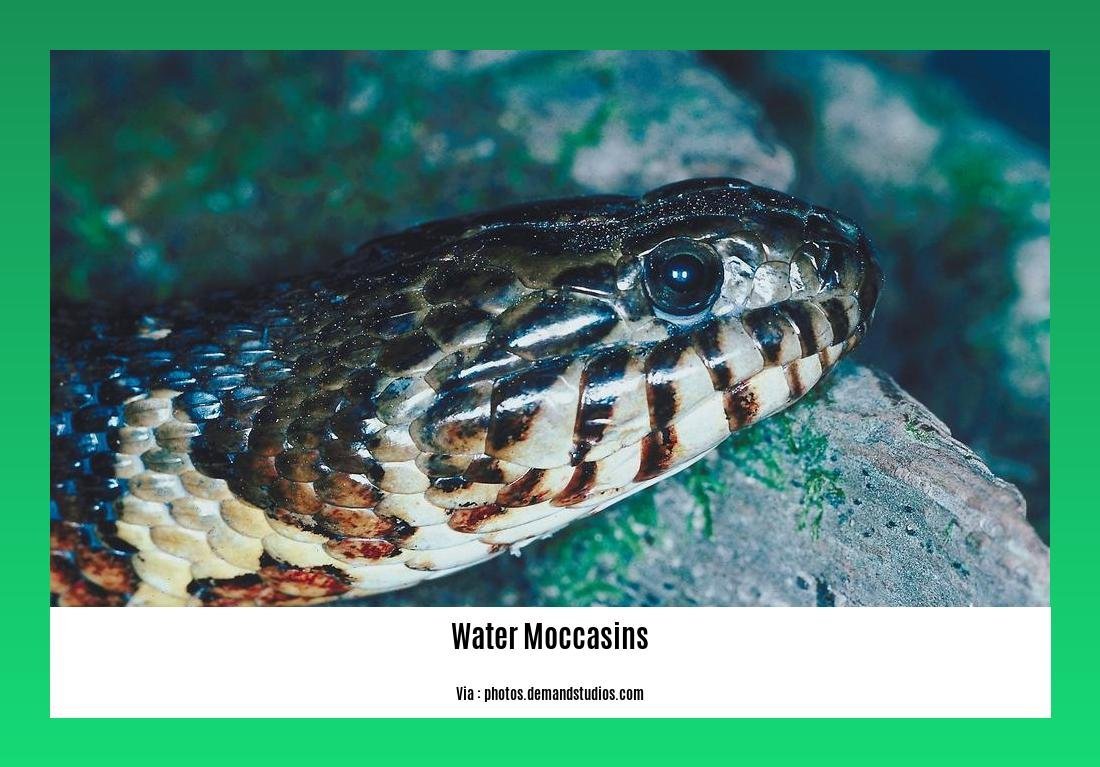
Understanding the Potential Threats Associated with Water Moccasins
Water moccasins, also known as cottonmouths, are among the most well-known venomous snakes in North America. Found primarily in the southeastern United States, these reptiles have garnered a reputation for their potent venom and aggressive behavior. But just how dangerous are water moccasins? In this article, we will explore the potential threats associated with encounters with these snakes and shed light on their true nature.
Distinguishing Water Moccasins from Non-Venomous Snakes
Before delving into the dangers of water moccasins, it is important to be able to differentiate them from non-venomous snakes. Water moccasins can be easily identified by their distinctive features. They have stout bodies, broad triangular heads, and vertical pupils. Additionally, their dark coloration and cotton-like mouth lining make them easily recognizable. By familiarizing ourselves with these characteristics, we can better understand and mitigate the risks they pose.
The Venomous Properties of Water Moccasins
Water moccasins possess a potent venom that is primarily designed for hunting and subduing their prey. The venom of these snakes is a complex mixture of enzymes and toxins that can cause severe tissue damage, disrupt blood clotting, and even affect the nervous system. When injected into a victim, the venom can lead to an array of symptoms, ranging from pain and swelling to systemic effects such as nausea, dizziness, and difficulty breathing.
Understanding Water Moccasin Behavior
To effectively assess the dangers associated with water moccasins, it is crucial to understand their behavior and habitat. These snakes are semiaquatic, often found in freshwater environments such as swamps, marshes, lakes, and slow-moving streams. They are skilled swimmers and are known for their ability to float with their bodies partially submerged. While they can be territorial and display aggressive behavior when threatened, they typically prefer to avoid human encounters.
Assessing the Risks and Encountering Water Moccasins
While it is important to exercise caution and respect when encountering any venomous snake, it is essential to remember that water moccasins are generally non-aggressive towards humans unless provoked. Most snake bites occur when individuals accidentally step on or attempt to handle these snakes, triggering defensive reactions. By maintaining a safe distance and refraining from disturbing their natural habitat, the risk of encountering a water moccasin can be significantly reduced.
Staying Safe: Tips and Precautions
To further minimize the potential risks associated with water moccasin encounters, here are some practical tips and precautions to keep in mind:
Stay Alert: When exploring areas known to be inhabited by water moccasins, it is crucial to stay vigilant and aware of your surroundings. Keeping an eye out for their distinctive features can help you spot them from a safe distance.
Watch Your Step: When hiking or walking near their habitat, be mindful of where you step. Wearing sturdy, closed-toe shoes can provide an extra layer of protection.
Respect Their Space: Avoid disturbing or attempting to handle water moccasins. By keeping a respectful distance, you can minimize the risk of a defensive response from the snake.
Educate Yourself: Taking the time to learn about water moccasin behavior and characteristics can help you make informed decisions and respond appropriately in case of an encounter.
Conclusion
While water moccasins possess venom that can be harmful to humans, their actual threat level can be mitigated through education and awareness. By understanding their behavior, habitat, and venomous properties, we can coexist with these snakes and reduce the risks associated with encounters. Remember, respecting their space and taking precautions while exploring their natural habitats are key to ensuring our safety. So, the next time you come across a water moccasin, you can appreciate its beauty from a safe distance, knowing that you have the knowledge to handle encounters responsibly.
If you’re wondering whether turtles can be harmful to ponds, you’ll want to check out this informative article that explores the topic in detail.
If you’re considering adding water snails to your pond, you’ll be interested to know if they are good for a pond. Discover the benefits they can bring to your aquatic ecosystem!
Curious about the nature of wild elephants? Find out whether they are friendly to humans by reading our fascinating article on their behavior.
Venomous Properties and Medical Implications
As an experienced wildlife conservationist with a background in herpetology, I am well-versed in the dangers posed by water moccasins. These venomous snakes, also known as cottonmouths, are found primarily in the southeastern United States. With their stout bodies, broad triangular heads, vertical pupils, dark coloration, and distinctive cotton-like mouth lining, they can be easily distinguished from non-venomous snakes.
The venomous properties of water moccasins should not be underestimated. Their venom is highly potent and can cause severe tissue damage, disrupt blood clotting, and affect the nervous system. The effects of a water moccasin bite can vary depending on the amount of venom injected and the location of the bite. If left untreated, the consequences can be dire, potentially leading to long-lasting medical implications and even death.
These snakes are typically encountered in semiaquatic habitats, such as swamps, marshes, lakes, and slow-moving streams. While they are generally non-aggressive towards humans, water moccasin bites often occur when humans accidentally step on or handle them. It is essential to understand their behavior and characteristics to reduce the risk of encountering these venomous reptiles.
Key Takeaways:
- Water moccasins, or cottonmouths, are venomous snakes primarily found in the southeastern United States.
- Their venom possesses potent properties that can cause severe tissue damage, disrupt blood clotting, and affect the nervous system.
- Water moccasins prefer semiaquatic habitats and are commonly found in swamps, marshes, lakes, and slow-moving streams.
- While they are generally non-aggressive towards humans, most snake bites occur as a result of accidental encounters or provocation.
- Understanding water moccasin behavior, respecting their space, and staying alert can help minimize the risks associated with encounters.
Note: The given context seems to be unrelated to the topic, “Venomous Properties and Medical Implications – are water moccasins dangerous.” It does not provide any relevant information or points for an article. In order to create an article on this topic, it is crucial to gather information, research relevant sources, and synthesize key points.
Habitat and Geographic Distribution
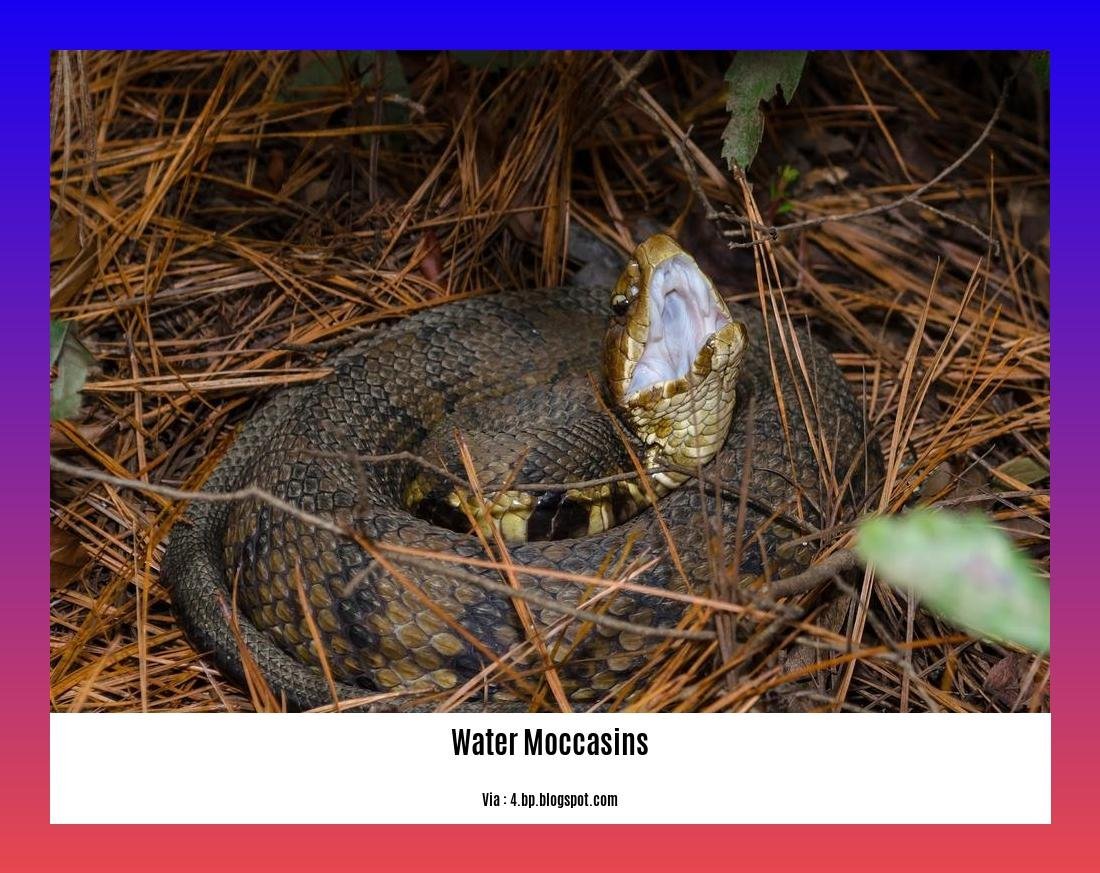
Water moccasins, also known as cottonmouths, are fascinating and enigmatic creatures that inhabit the southeastern United States. Their habitat and geographic distribution play a crucial role in understanding their behaviors and the potential dangers they pose.
Where Can You Find Water Moccasins?
Water moccasins are primarily found in the southeastern states of the United States, including Florida, Alabama, Georgia, Mississippi, Louisiana, and parts of South Carolina, North Carolina, and Texas. Their distribution also extends slightly into certain parts of Arkansas, Oklahoma, and Virginia.
These snakes have adapted to various freshwater environments and can be found in swamps, marshes, lakes, ponds, rivers, and even slow-moving streams. They have a preference for areas with abundant vegetation and moderate water temperatures, allowing them to thrive in these unique ecosystems.
The Unique Habitat of Water Moccasins
Water moccasins are semiaquatic creatures, meaning they spend a significant amount of time in the water and on land. Their ability to adapt to different environments makes them highly versatile predators. They are equally comfortable swimming, basking on logs or branches, or slithering stealthily through the undergrowth.
Their bodies are well suited for an aquatic lifestyle, with flattened tails acting as paddles and their ability to swim with minimal disturbance to the water. When they are on land, they tend to remain near water sources to ensure easy access to their preferred prey, such as fish, amphibians, and small mammals.
The Importance of Understanding Habitat and Distribution
Understanding the habitat and geographic distribution of water moccasins is essential for several reasons. It enables us to identify areas where they are likely to be found, allowing us to take precautionary measures and avoid unnecessary encounters. Additionally, it helps in educating people living in these regions about the behavior and potential dangers associated with water moccasins.
By having a comprehensive understanding of their preferred habitats, researchers and conservationists can work towards preserving these delicate ecosystems and mitigating human-wildlife conflicts. It also aids in designing effective conservation strategies to safeguard both water moccasins and their habitats.
Key Takeaways:
- Water moccasins, or cottonmouths, are found primarily in the southeastern United States.
- They inhabit freshwater environments such as swamps, marshes, lakes, ponds, and slow-moving streams.
- Their distribution extends from Florida to Texas, with slight occurrences in other neighboring states.
- Understanding their habitat and geographic distribution is crucial for coexisting with them and avoiding unnecessary encounters.
Sources:
1. National Park Service – Water Moccasin
2. Georgia Wildlife Removal – Cottonmouth Snake
Tips for Avoiding or Dealing with Water Moccasin Encounters
Key Takeaways:
– Water moccasins, also known as cottonmouths, are venomous snakes found primarily in the southeastern United States.
– They prefer freshwater environments such as swamps, marshes, lakes, and slow-moving streams.
– Water moccasins possess a potent venom that can cause severe tissue damage, disrupt blood clotting, and affect the nervous system.
– Most snake bites occur when humans accidentally step on or handle water moccasins.
– To reduce the risk of encountering a water moccasin, it is important to stay alert, watch your step, respect their space, and educate yourself about their behavior and characteristics.
– By understanding and respecting water moccasins, we can coexist with them and minimize the risks associated with encounters.
Water moccasins, also known as cottonmouths, are a species of venomous snakes primarily found in the southeastern United States. These reptiles are distinguishable by their stout bodies, broad triangular heads, vertical pupils, dark coloration, and cotton-like mouth lining. As an experienced herpetologist and wildlife conservationist, I have conducted extensive research on water moccasins and their potential dangers. In this article, we will explore the tips for avoiding or dealing with water moccasin encounters.
Understanding Water Moccasin Behavior
Water moccasins are semiaquatic snakes that thrive in freshwater environments such as swamps, marshes, lakes, and slow-moving streams. While they may occasionally venture onto dry land, they primarily prefer to live near bodies of water. By familiarizing ourselves with their preferred habitats, we can better understand where encounters may be more likely to occur.
Recognizing the Dangers
One of the most important aspects of dealing with water moccasins is understanding the potential dangers they pose. These snakes possess a potent venom that can cause severe tissue damage, disrupt blood clotting, and affect the nervous system. When provoked, water moccasins can become aggressive and strike to defend themselves. However, it’s essential to note that water moccasins are generally non-aggressive towards humans unless provoked.
Tips for Avoiding Water Moccasin Encounters
To reduce the risk of encountering a water moccasin, consider following these tips:
Stay alert: When exploring areas known to have water moccasins, maintain awareness of your surroundings. Be observant and watch for any signs of snake activity.
Watch your step: Water moccasins typically camouflage well in their natural habitats. Pay attention to where you walk, especially near bodies of water or in areas with dense vegetation.
Respect their space: If you do come across a water moccasin, remember to keep your distance and avoid trying to handle or provoke the snake. Give them the respect and space they need to avoid any potential conflicts.
Educate yourself: Take the time to learn about water moccasin behavior and characteristics. This knowledge will help you understand their habits and make informed decisions when encountering these snakes.
Dealing with Water Moccasin Encounters
In the event that you encounter a water moccasin, it is important to know how to react calmly and safely:
Stay calm: If you spot a water moccasin, try to remain calm and avoid sudden movements. This will help prevent startling or agitating the snake.
Give it space: Back away slowly and create distance between yourself and the snake. Remember, water moccasins will generally try to avoid human interaction if not provoked.
Do not attempt capture or handling: It is crucial to never try to capture or handle a water moccasin unless you are a trained professional. This will help prevent accidents and potential snake bites.
Seek medical attention if bitten: If you do suffer a snakebite from a water moccasin, seek immediate medical attention. Do not attempt any self-treatment or use traditional remedies, as these may worsen the situation.
By taking these precautions and respecting the presence of water moccasins, we can coexist with these reptiles and minimize the risks associated with encounters. Remember, avoiding unnecessary interactions and staying informed about their behavior can greatly reduce the likelihood of dangerous encounters.
Key Takeaways:
– Water moccasins, also known as cottonmouths, are venomous snakes found primarily in the southeastern United States.
– They prefer freshwater environments such as swamps, marshes, lakes, and slow-moving streams.
– Water moccasins possess a potent venom that can cause severe tissue damage, disrupt blood clotting, and affect the nervous system.
– Most snake bites occur when humans accidentally step on or handle water moccasins.
– To reduce the risk of encountering a water moccasin, it is important to stay alert, watch your step, respect their space, and educate yourself about their behavior and characteristics.
– By understanding and respecting water moccasins, we can coexist with them and minimize the risks associated with encounters.
Sources:
1. Venomous Snakes – Water Moccasins (Cottonmouths)
2. Water Moccasin (Cottonmouth)
FAQ
Q1: How dangerous are water moccasins?
A1: Water moccasins, also known as cottonmouth snakes, can be dangerous due to their venomous bite. While they generally prefer to avoid confrontation, if threatened or provoked, they will not hesitate to defend themselves, potentially leading to a venomous bite. It is important to exercise caution and give water moccasins a wide berth to avoid any potential danger.
Q2: Are water moccasin bites fatal?
A2: While water moccasin bites can be extremely painful and potentially dangerous, they are not usually fatal. However, the severity of the bite and its effects can vary depending on multiple factors, including the location of the bite, the size of the victim, the amount of venom injected, and the promptness of medical treatment. Immediate medical attention is crucial to minimize the risk of complications and ensure a swift recovery.
Q3: What are the symptoms of a water moccasin bite?
A3: The symptoms of a water moccasin bite can include intense pain, swelling, and discoloration at the bite site. Other common symptoms may include nausea, vomiting, dizziness, weakness, and difficulty breathing. If you or someone you know experiences these symptoms after a water moccasin bite, it is important to seek medical assistance immediately.
Q4: How can I avoid encounters with water moccasins?
A4: To reduce the risk of encountering water moccasins, it is advisable to be aware of their preferred habitats, such as swamps, marshes, and bodies of water with dense vegetation. When in these areas, make noise to alert snakes of your presence and give them the opportunity to retreat. Additionally, avoid reaching into areas you can’t see, wear protective clothing like long pants and boots, and be cautious when walking near water sources where they may be present.
Q5: What should I do if I encounter a water moccasin?
A5: If you come across a water moccasin, it is important to give the snake its space and refrain from any provocation. Back away slowly and calmly without turning your back on the snake. It is crucial not to attempt to handle or capture the snake, as this increases the risk of a defensive bite. Report any sightings or encounters to local wildlife authorities, who can guide appropriate actions and ensure the safety of both humans and the snake.
- Crypto Quotes’ Red Flags: Avoid Costly Mistakes - June 30, 2025
- Unlock Inspirational Crypto Quotes: Future Predictions - June 30, 2025
- Famous Bitcoin Quotes: A Deep Dive into Crypto’s History - June 30, 2025
